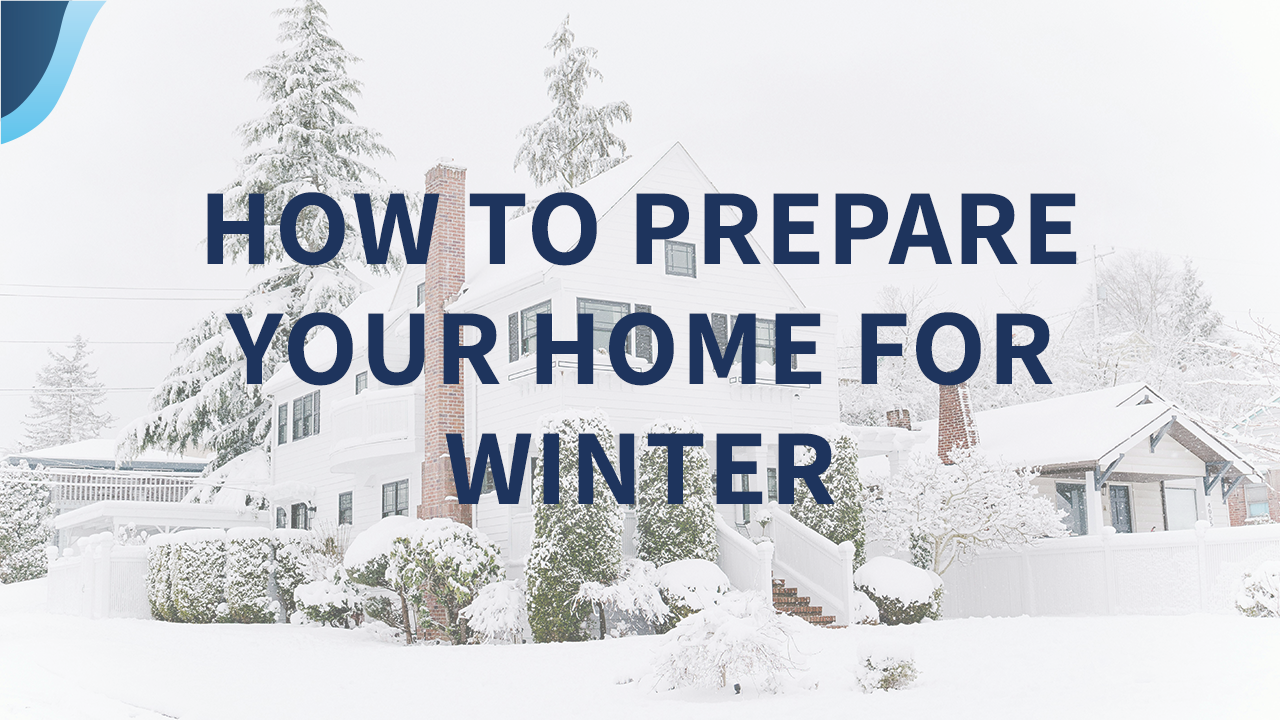As property owners, with temperatures swiftly dropping and the holiday season in full swing, it’s time for you to learn how to prepare your home for the winter weather. Winterization and seasonal maintenance are not activities most homeowners enjoy, although they are paramount to creating a comfortable indoor environment during the colder months, conserving energy, and preserving property values.
Before snow, ice, and winter storms negatively affect your home, take some time to get ready for the cold weather. The following tips can help you prepare your home for the winter:
1. Conduct HVAC Maintenance
It’s essential to have your HVAC system inspected each year. An early inspection can identify problems with your furnace and allow time for needed repairs before the temperatures drop. Seasonal HVAC maintenance also allows homeowners to clean their air ducts and change their furnace filters to ensure the system is efficient and effective. Remember, the average HVAC system might only last 12-15 years, although extended longevity is certainly with proper maintenance.
2. Install a Programmable Thermostat
If you’re still using a traditional thermostat to operate your home’s HVAC system, there’s never been a better time to update it with a programmable model. If homeowners and their families maintain somewhat regular schedules, they can save money on energy bills by installing a thermostat they can program to match their lifestyles. For example, it can automatically adjust the heat before the household rises in the morning, again after everyone leaves for work or school, and still again just before occupants arrive home in the evening. Many smart thermostats even can be controlled through a convenient mobile app.
3. Clean Gutters
Cleaning gutters before winter weather is a pertinent aspect of home maintenance. If the home is in an area that typically accumulates snow, this additional weight can burden gutters and even cause them to collapse. Further, if gutters become clogged with debris, such as fallen leaves and twigs, they won’t properly drain water away from the building, causing water to damage the structure. Add ice and snow to that improper drainage, and the damage quickly could equate to thousands of dollars in repairs.
4. Seal Leaks
You might be surprised how many invisible leaks and drafts are present in your home, letting cold air in – or allowing warm air to escape – through walls, doors, and windows. Air leaks prevent your HVAC system from properly heating your home and can have a profoundly negative impact on your energy bills. Before winter weather arrives, use caulk, foam, or weatherstripping to seal leaks around doors and windows. You also can cover mail slots and pet doors with insulating material to reduce air exchange.
5. Inspect the Roof and Chimney
It’s vital to inspect your roof when preparing your property for winter. Severe winter weather can wreak havoc on roofs. When planning how to prepare your home for the winter, it’s important to repair any existing damage and ensure the roof is in peak condition before ice, hail, and strong winds arrive. If you cannot access your roof, a contractor can inspect for you, including most minor repairs. Likewise, if the home has a fireplace, the chimney needs a seasonal inspection and cleaning to keep it functional and reduce the risk of a house fire.
6. Protect Exterior
While you might be concerned about the interior comfort of your home in the winter, it’s also important to protect the building’s exterior from harsh weather elements. Wooden details, such as the trim around windows and doors, often is unsealed and can deteriorate quickly if not protected by paint, caulk, or another sealant. Like wood, other outdoor materials, such as concrete patios, walkways, and driveways, need protection with a concrete sealer to prevent weather-related cracks.
7. Add Insulation
Drafts and leaks aren’t the only way heat can escape your home. Many homeowners increase the efficiency of their HVAC systems – and their comfort – by insulating their windows with bubble wrap, plastic sheets, or a window insulation kit. A storm door can reduce heat loss at entrances, and installing insulation in a home’s attic can prevent heat from being lost through the ceiling. Contractors can insulate exposed pipes in an attic or basement to prevent them from bursting in cold weather.
8. Trim Branches
Heavy snow or ice can cause even healthy tree branches to break under the excess weight. Homeowners should cut and trim branches that hang over their homes, so the wooden debris doesn’t fall on and damage the roof. After all, an ice-coated tree branch is heavy and can damage roofs significantly, even causing additional internal damage to your home. Property owners who cannot cut the branches for whatever reason should hire a landscaping company or a tree surgeon to determine what adjustments are needed to keep the home safe.
9. Reverse Ceiling Fans
It might seem like a minor adjustment, but reversing the direction of ceiling fans when transitioning from the air conditioner to the furnace can improve occupants’ comfort level and HVAC systems’ efficiency. Since warm air rises, reversing the direction of ceiling fans helps create an updraft, pushing the heated air down from the ceiling. Reversing the direction of most ceiling fans is a simple task: just turn off the fan, and click the switch above the blades.
10. Prepare for Winter Storms
In many areas, winter storms are inevitable at some point during the colder months, even if they aren’t particularly predictable. When planning how to prepare your home for the winter, it’s important to prepare for storms. Make sure your snowblower or other equipment is operational before it’s time to use it. If you don’t have one, make sure, at the very least, you invest in snow shovels, rock salt, and some heavy gloves. You’ll also want to ensure you’ve ordered firewood before you need it, and if you have a backup generator, make sure it’s also properly functioning. Don’t forget the fuel!












